Exercises for Hyperlordosis
Hollow back?
We show you easy-to-learn hyperlordosis stretches for pain relief.
Hollow back?
We show you easy-to-learn hyperlordosis stretches for pain relief.
Hyperlordosis, also known as hollow back, is an excessive curvature of the lumbar spine. It is caused by a combination of weak abdominal muscles and tight hip flexors. Hyperlordosis can cause pain in the lower back, hips, and neck. It can also make it difficult to stand up straight and walk.
Stretching exercises can help to improve flexibility and reduce pain in people with hyperlordosis. Some of the most effective stretching exercises for hyperlordosis we recommend include:
These exercises can easily be done at home. It is important to start slowly and gradually increase the intensity of the stretches as your flexibility improves.
EXERCISES AND STRETCHES FOR HYPERLORDOSIS
With just a few minutes a day you can relieve tension and pain caused by hollow back. Start with these exercises now!
It is important to start slowly and gradually increase the intensity and duration of your exercises over time. You should also stop any exercise that causes pain. As long as your breaths are regular, long and calm, you are doing just fine. Should you, however, notice too much pain or discomfort, take a step back and find an intensity that fits you best.
Follow Jo's stretching routine on video or set your own pace by using our photo instructions below.
Good posture is important for us for a number of reasons. It reduces muscle pain, improves joint health, and helps with balance and coordination.
From a psychological point of view, correct posture can make us look and feel more confident.
We have come up with various exercises that will treat the individual areas affected by hyperlordosis and realign your body in a natural way overall.
For this, we will work our way up, starting with stretching the lower parts of the body.
With exercises for hyperlordosis, we are able to activate our core muscles. Our back, abs, thighs and hips are responsible for supporting the spine and pelvis.
When these muscles are strong, they can help to pull the pelvis into a more neutral position, which can reduce the excessive curve in the lower back.
Tight muscles in the back and hamstrings can contribute to hyperlordosis. Exercises that stretch these muscles can help improve flexibility and reduce the excessive curve in the lower back.
Mobility and freedom are very important for people diagnosed with hollow back. Try our exercise program now.
Before beginning any exercises provided on this website, it is advised to consult a health professional, such as a physical therapist or chiropractor.
The exercise instruction and advice presented are in no way intended as a substitute for medical consultation. As with any exercise program, if at any point during your workout you begin to feel faint, dizzy, or have physical discomfort, you should stop immediately and consult a physician or doctor.
workouts
Total Exercise Time
workout mat
wall corner
STEP 1
Get into a lunge position with your right knee on the floor and your left leg bent at a 90-degree angle.
STEP 2
Push your hips forward until you feel a stretch in your right hip flexor.
It is important to feel the stretch in your hip flexor and to target that specific muscle. This may take some time at first, but with practice, you will develop the sense of when you are in the right position.
STEP 3
Repeat on the the other side.
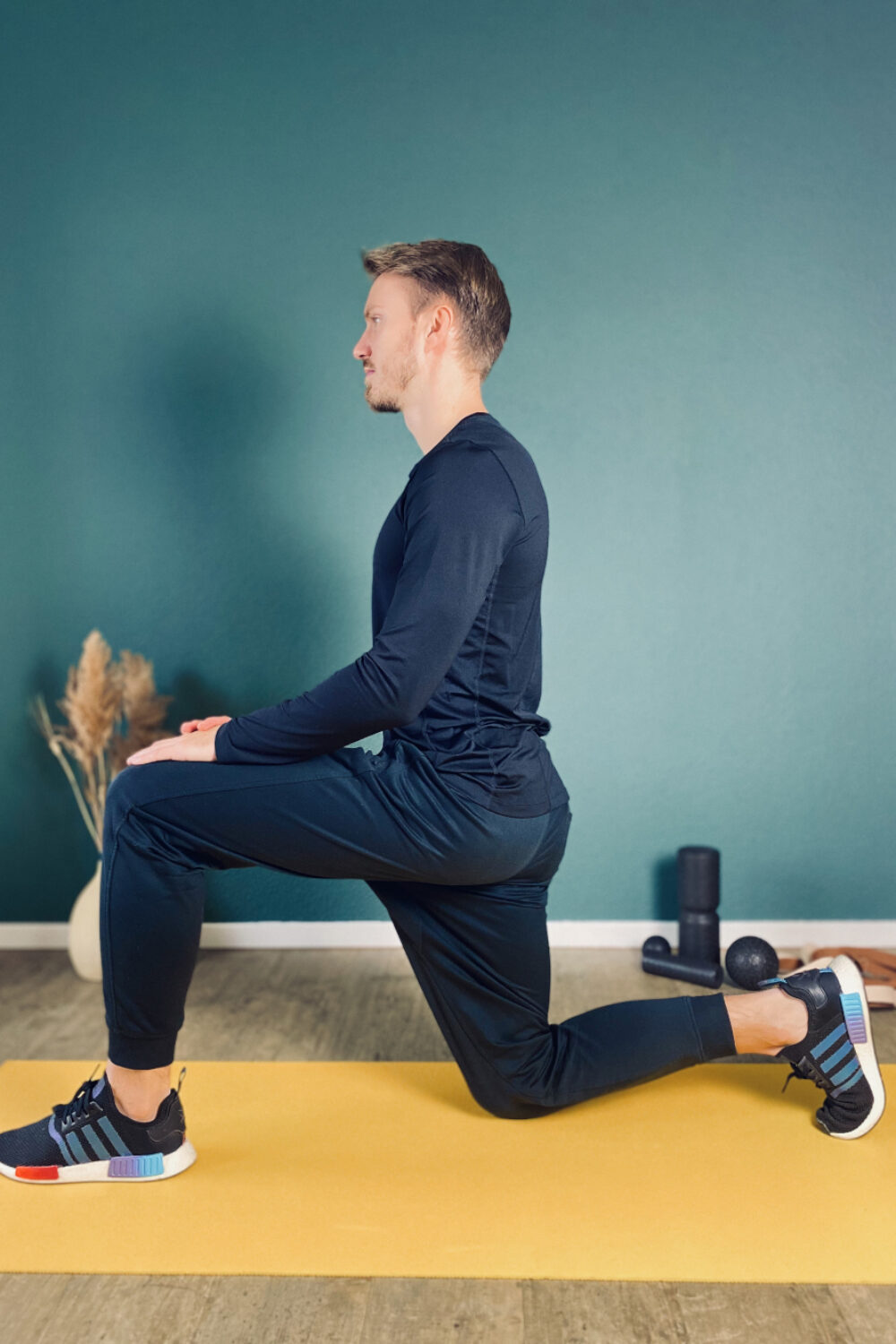
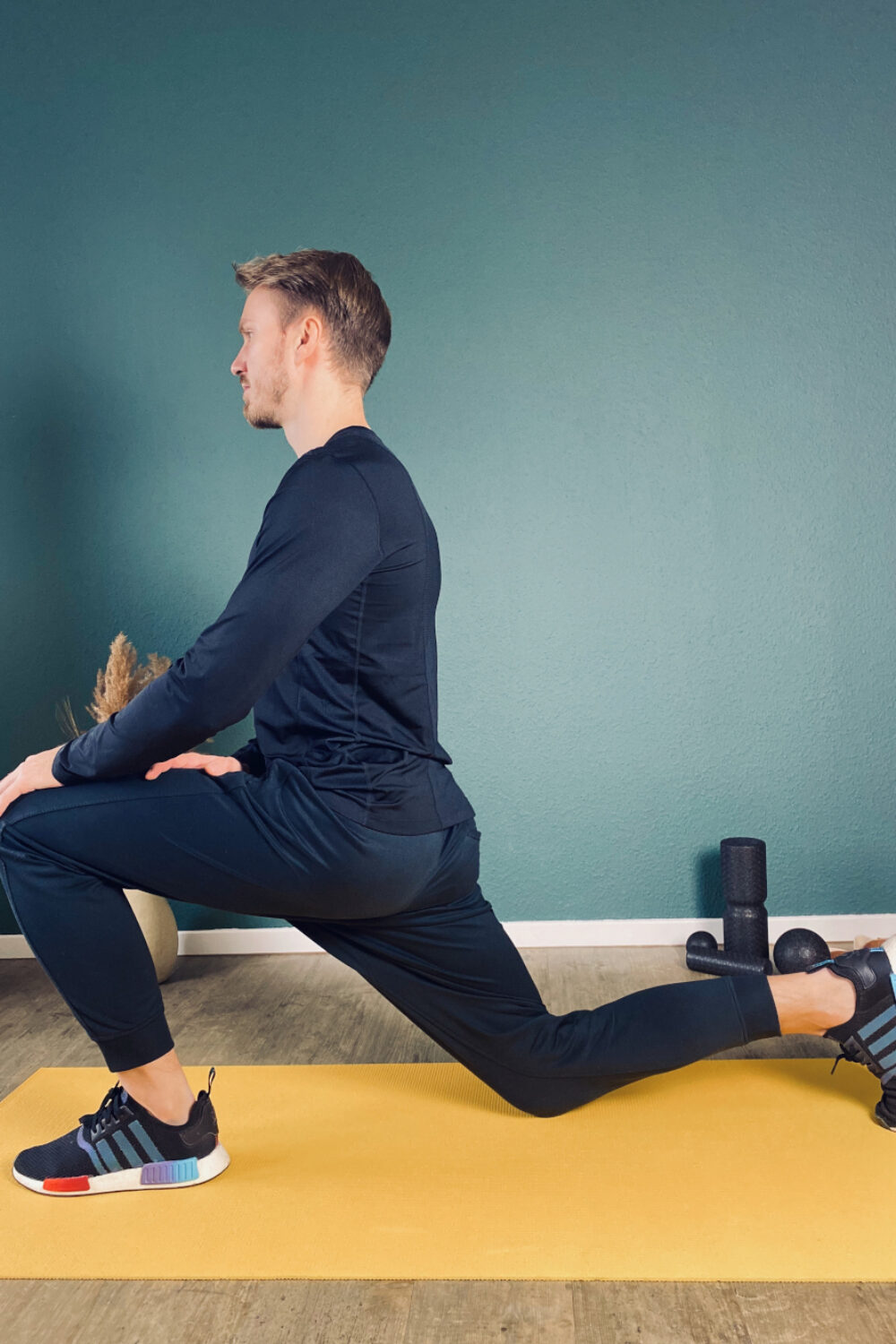
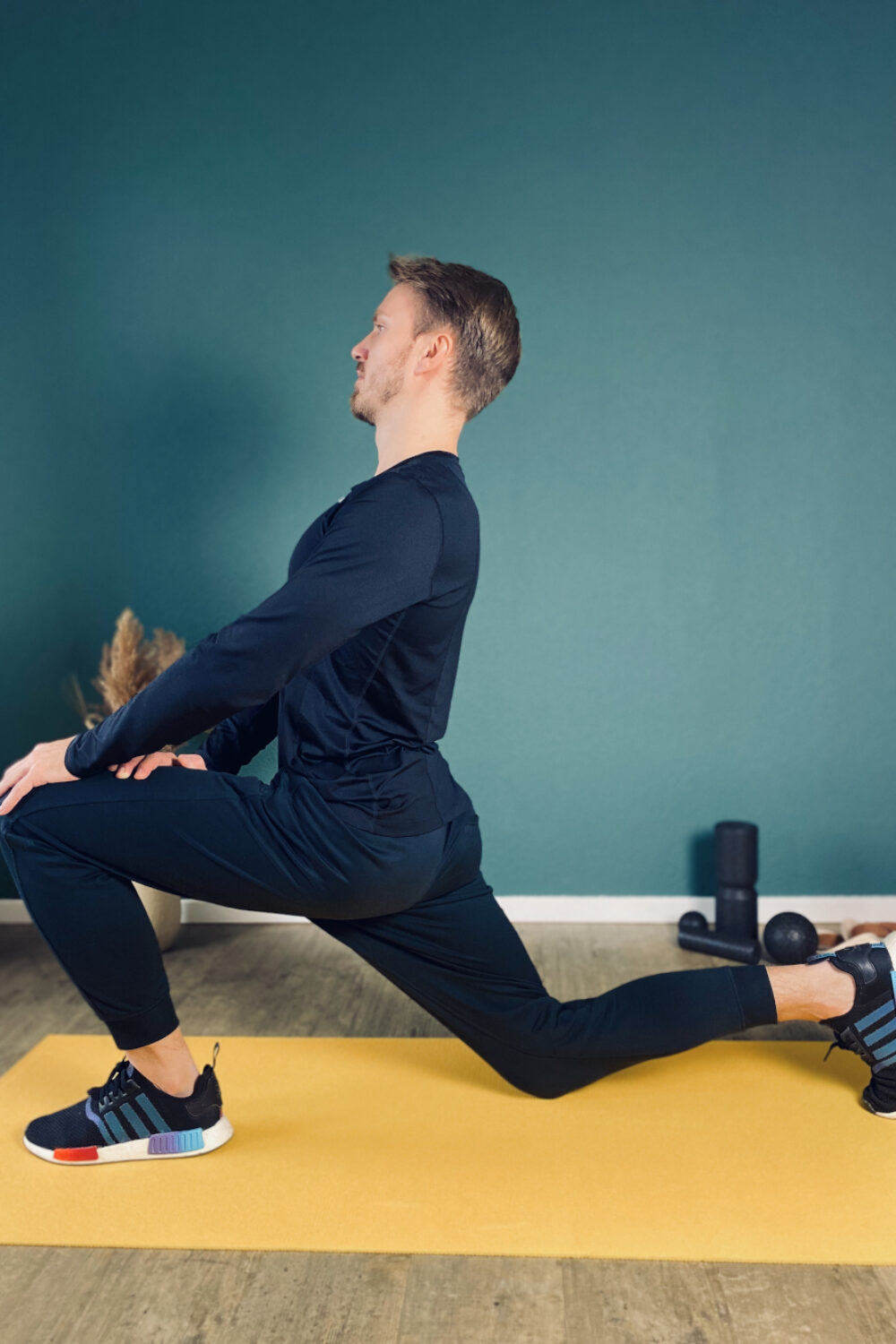
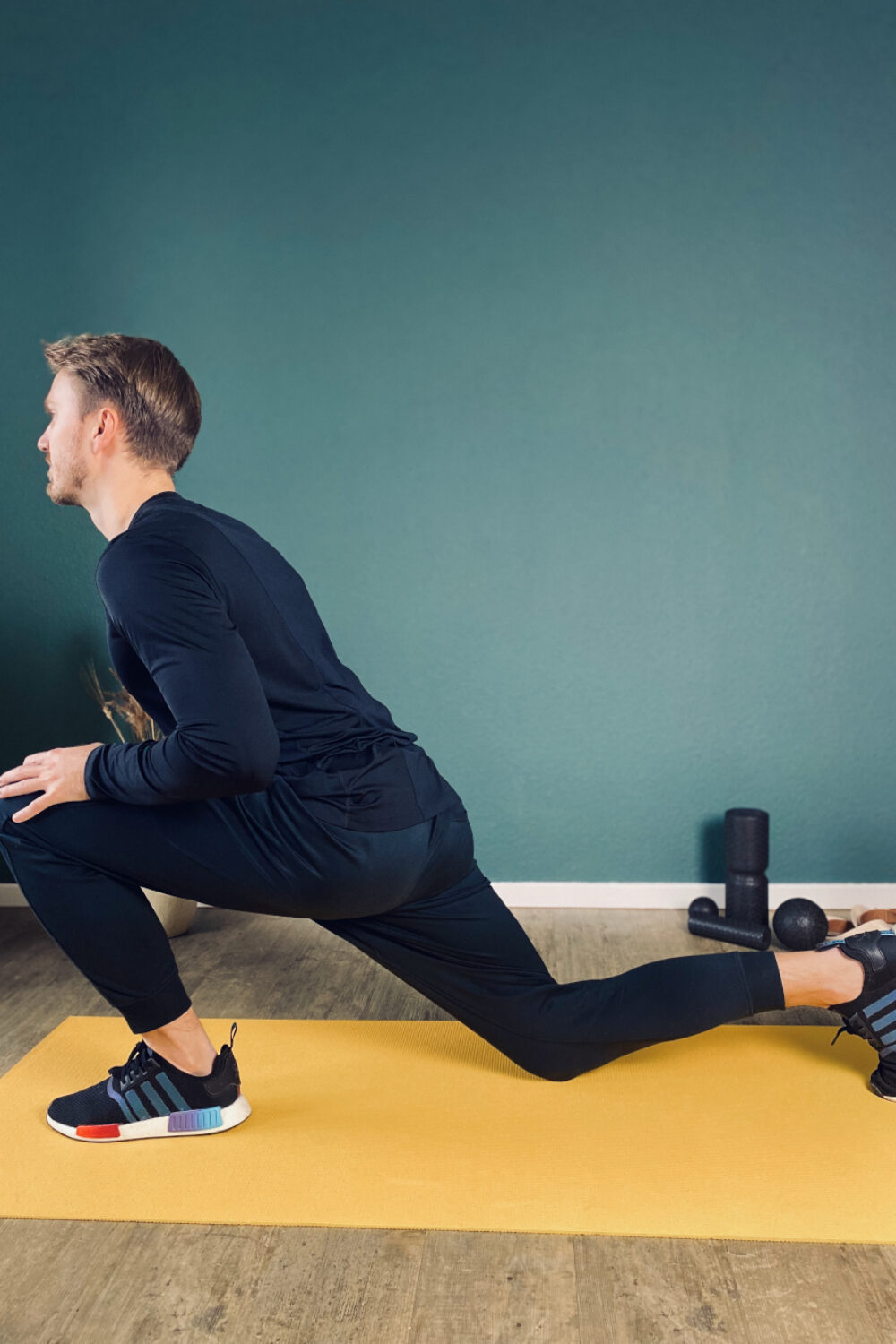
This exercise is great to do in any everyday situation, such as when you are stopped at a red light or waiting for a late bus. All you need is a few seconds to move your pelvis into the right position and train your muscles to hold it there.
STEP 1
To do this exercise, first feel your pelvis by going into a strengthened hollow back position and then the other way. This will help you to understand where your pelvis is in space and how to move it.
STEP 2
Once you have a good sense of your pelvis, practice aligning it correctly over and over again. To do this, tilt your pelvis backward while tightening your abdominal muscles. Hold this position for 10 seconds, then relax. Repeat as many times as you like.
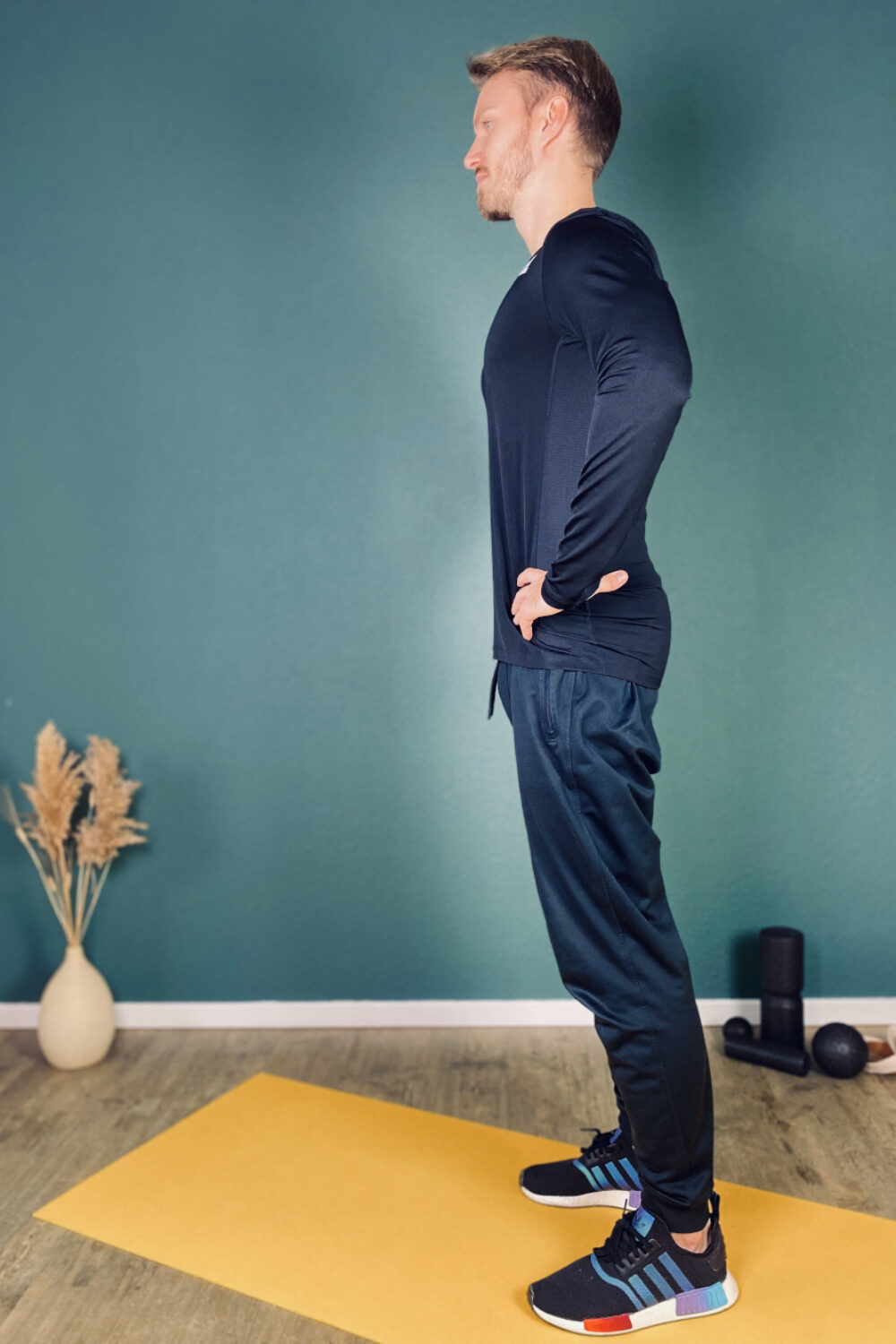

STEP 1
Stand in a corner of your home and spread your arms out to the sides, keeping your elbows straight.
Raise your arms so that your hands are at face level. Keep your upper body straight.
STEP 2
Lean your upper body forward until you feel a stretch in your chest muscles, shoulders, arms, and even elbows.
It is important to stretch your arms only as far as you can without pain. The rule of thumb is: a stretching pain is good, but as soon as you have to hold your breath or grit your teeth, it is too much. You can do even more stretching if you tilt your upper body slightly towards the corner.
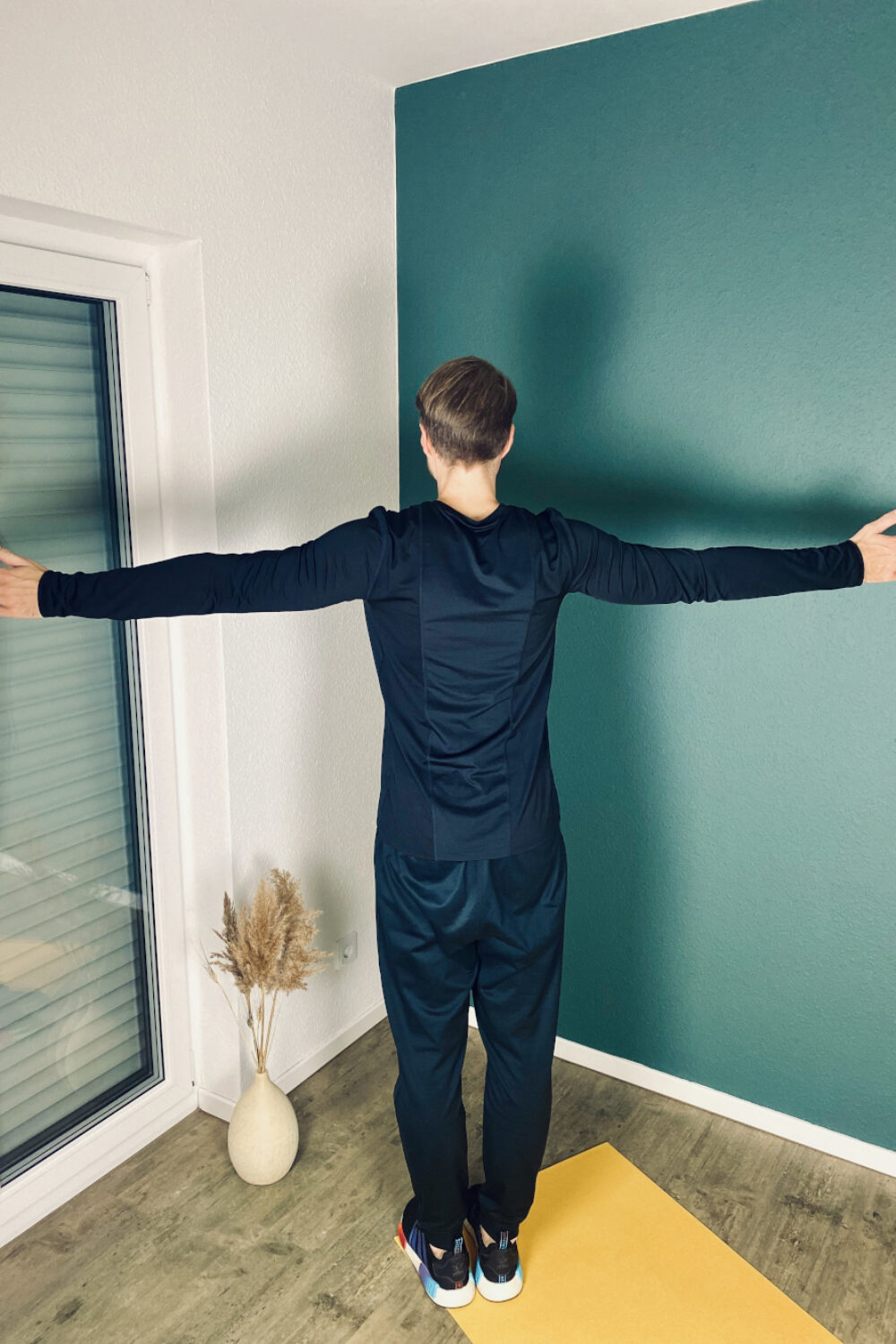
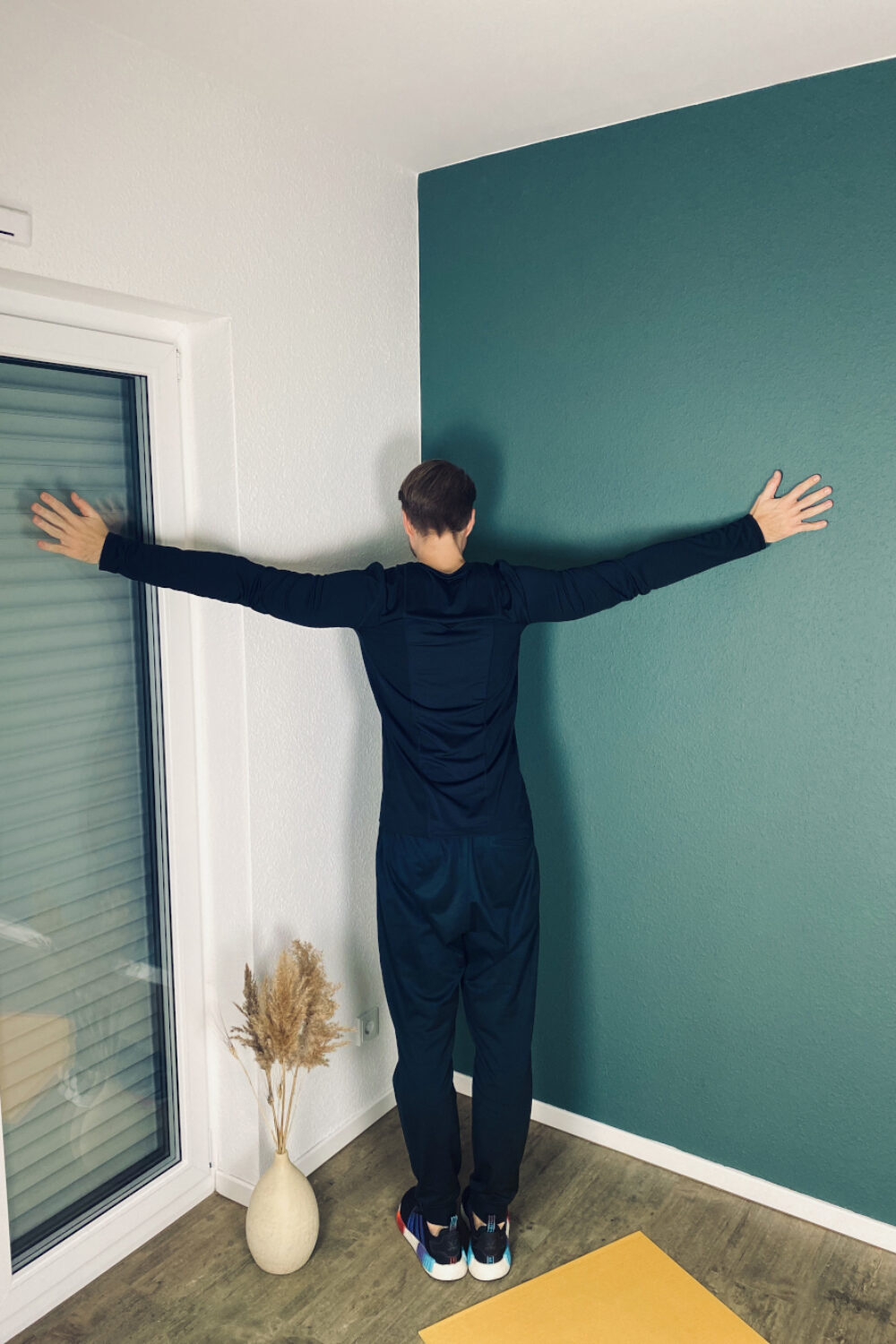
STEP 1
Lie on your stomach and bend your left arm at a 90-degree angle. Turn your head to the right.
STEP 2
Push yourself up with your right arm, rotating your hips with it. Keep your left arm in the same position as before.
Feel the stretch in your chest and left shoulder.
STEP 3
Push yourself as far into the stretch as you need. You can go further into the stretch by pulling your right leg as far out as possible. Hold this position for at least 60 seconds.
STEP 4
Repeat on the other side.
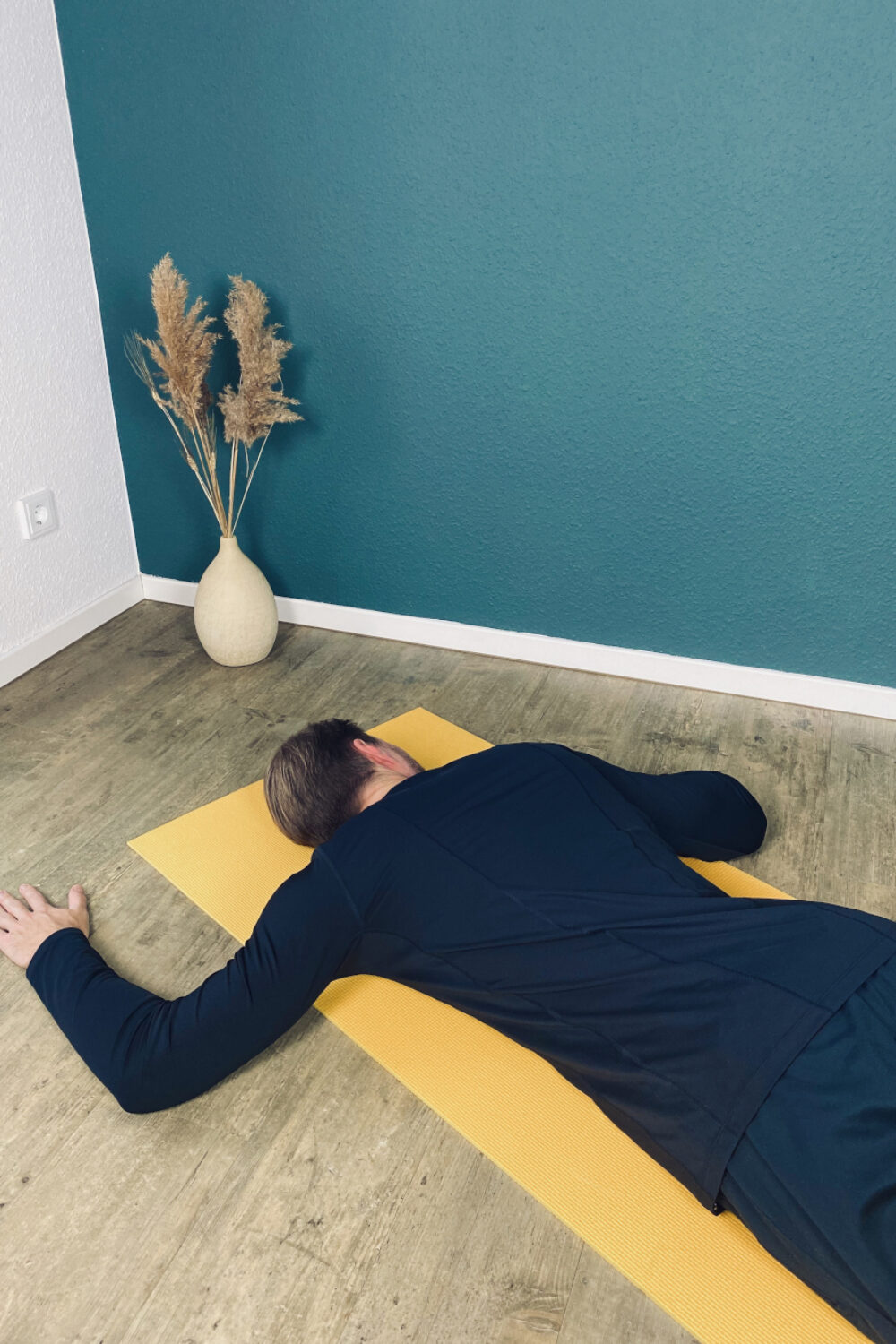
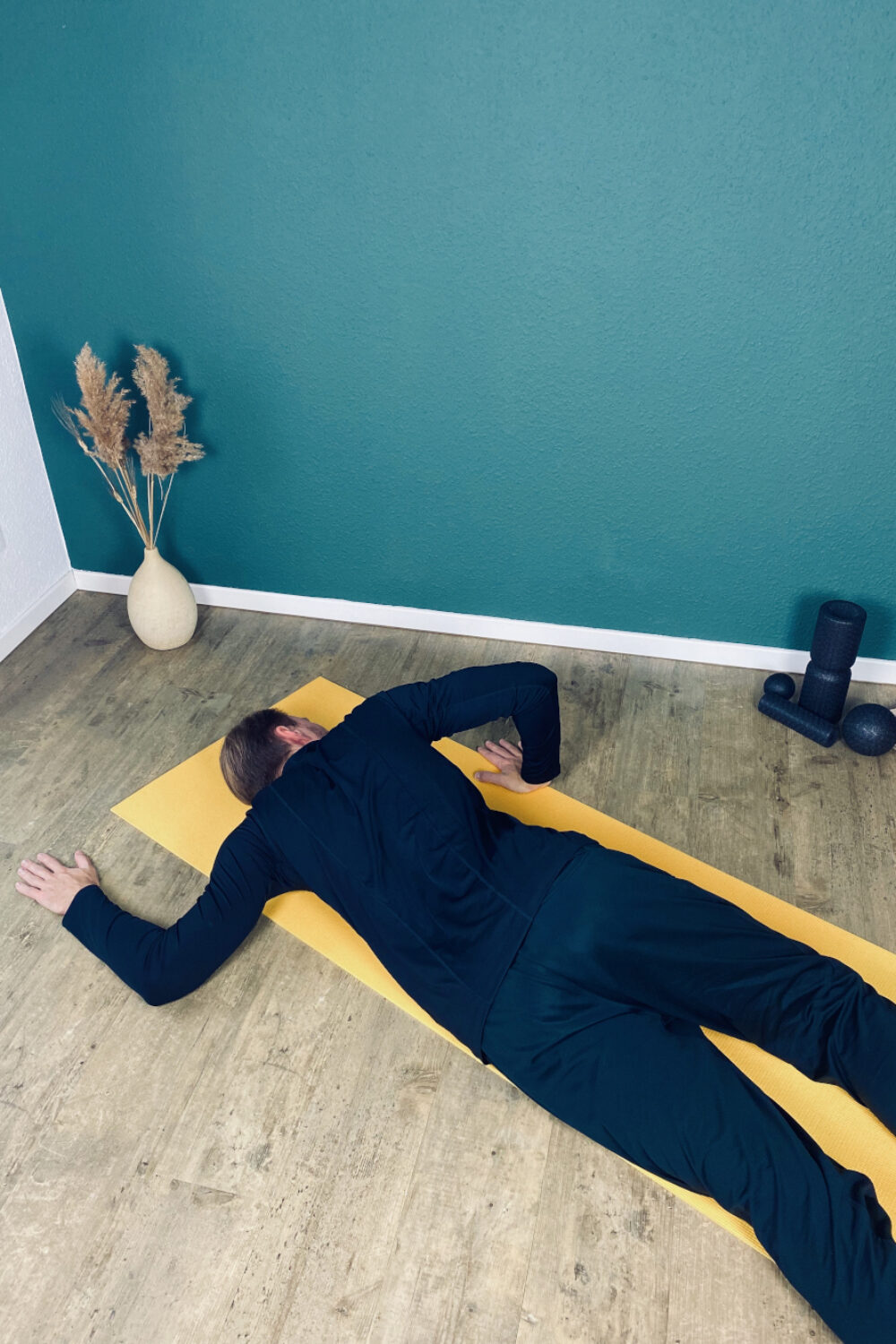
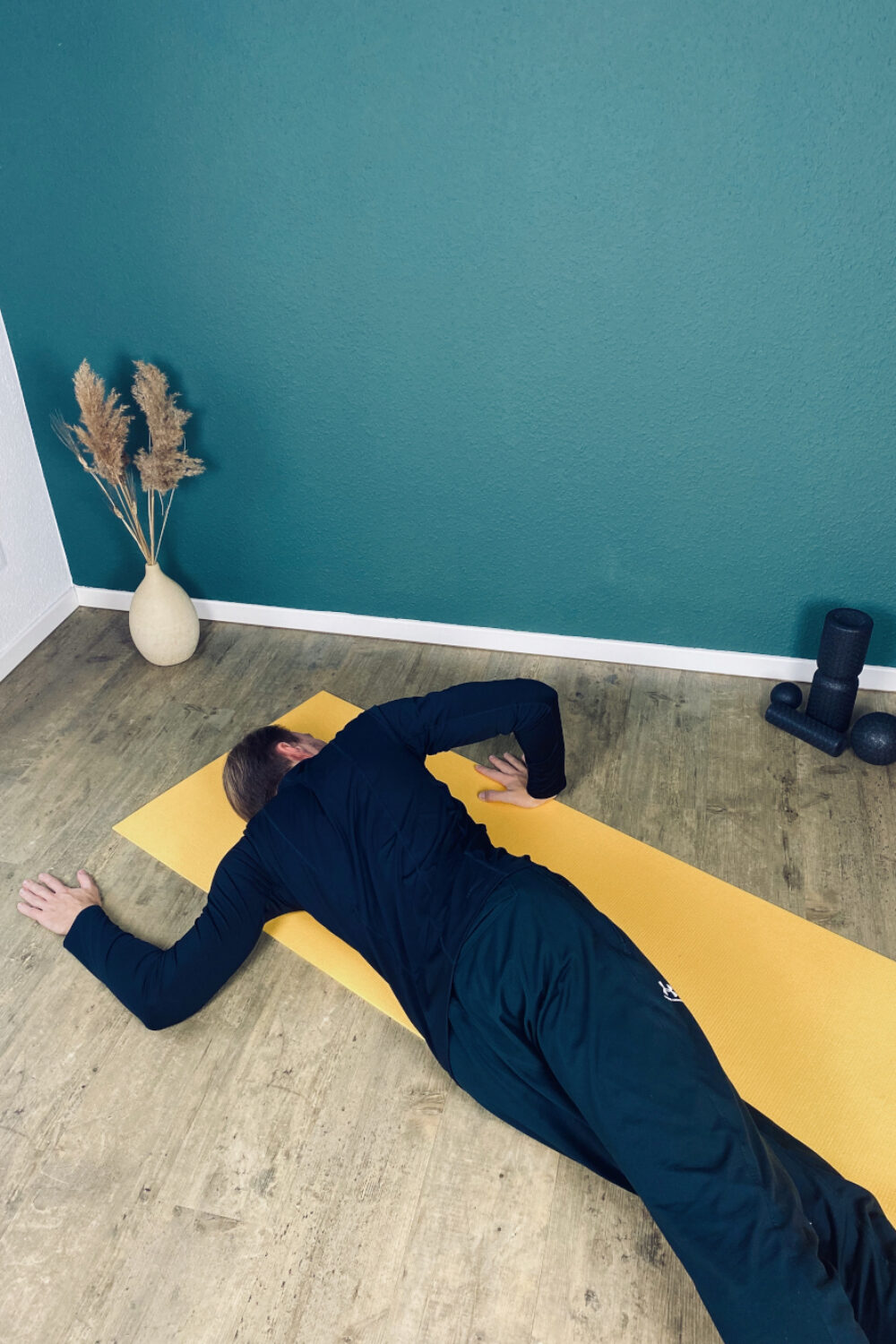
This posture alignment is great because we combine all the other exercises and align our entire body repeatedly. However, do not force yourself into any position that is painful. If you have any pain, stop the exercise immediately.
You will see how your posture will improve over time.
STEP 1
Stand against a wall or just stand wherever you are.
STEP 2
Straighten your pelvis. Tilt your pelvis backward by tightening your abdominal muscles.
Straighten your shoulders. Pull your shoulders back and down.
Straighten your neck. Gently tuck your chin towards your chest.
STEP 3
Hold this position actively for 40 seconds. Repeat this as often as you like.
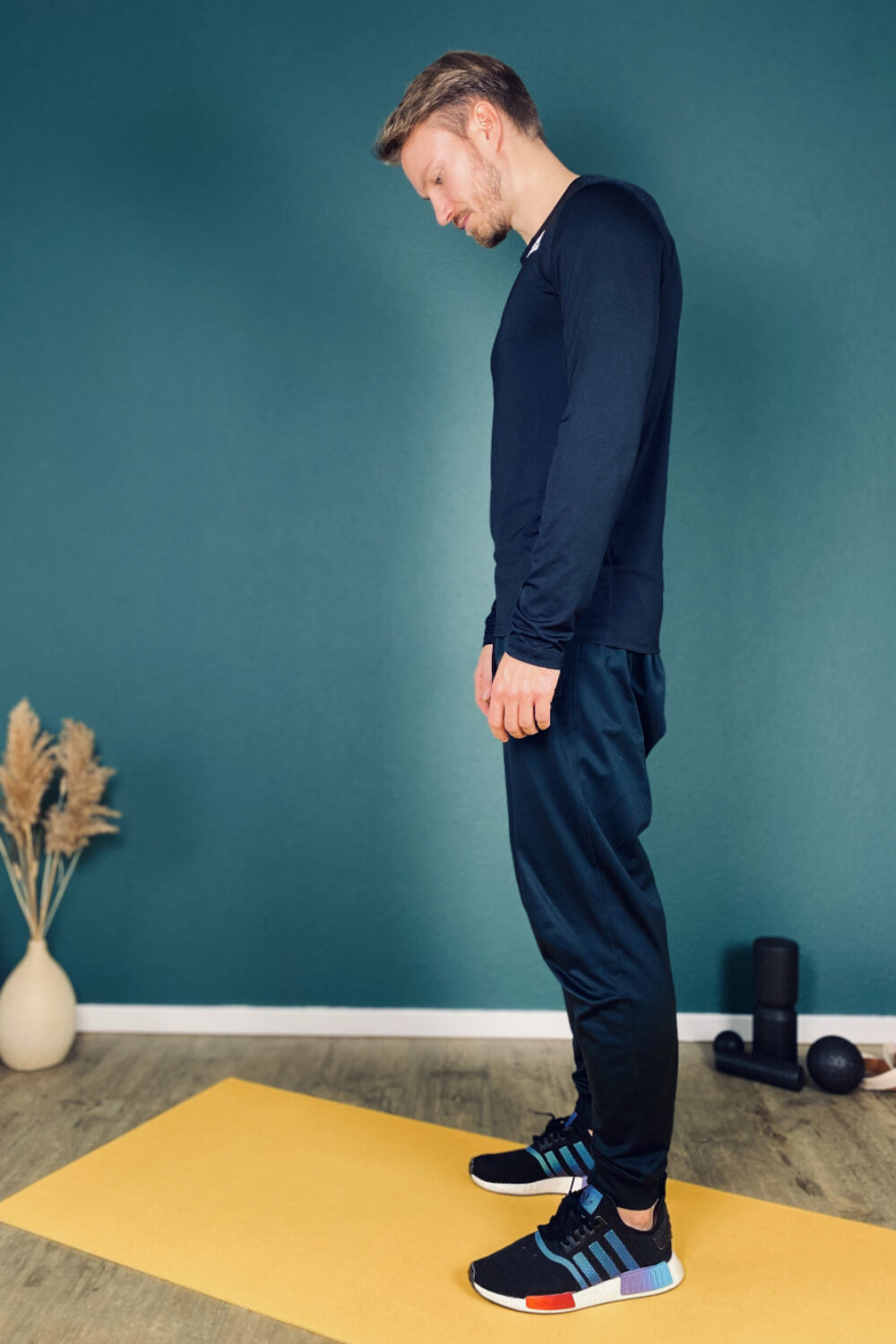
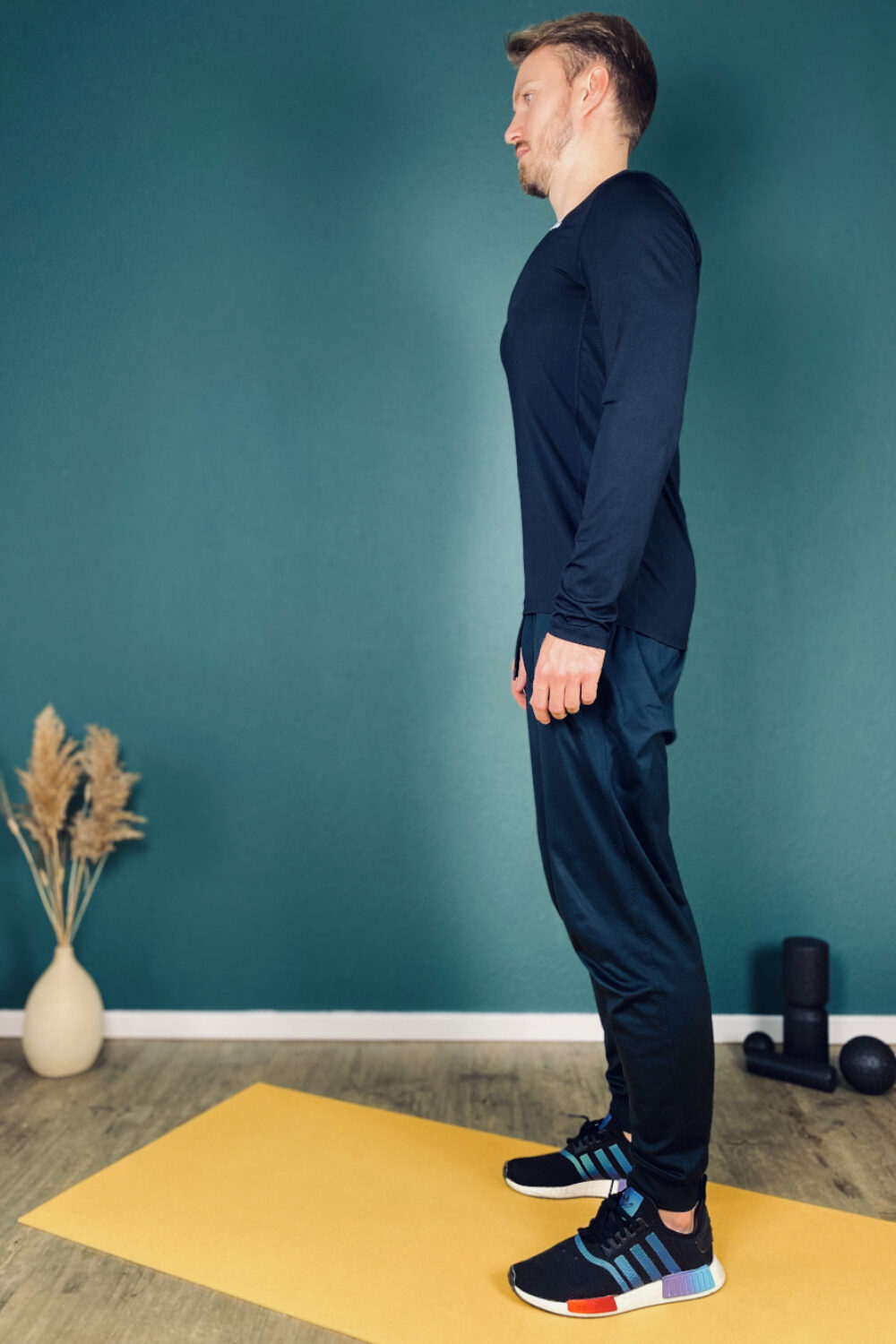
A hollow back, also known as hyperlordosis, is an excessive curvature of the lumbar spine. It is characterized by an overly curved lower back, which gives the spine an S-shape.
To recognize a hollow back, stand sideways in front of a mirror. If you see that your buttocks protrude backwards and your abdomen sticks out, you may have a hollow back.
Other signs of a hollow back include:
Some of the causes of a hollow back can include weak abdominal muscles, tight hip flexors, poor posture or sitting for long periods of time.
How a hollow back can cause quite some knee pain. A hollow back is a posture where the spine curves too much in the lower back. This can cause pain in other parts of the body, including the knees.
When you sit with your knees bent at a 90-degree angle, the muscles around your knee shorten. This can weaken the tendons and lead to pain. As a result, the knee joint itself is not loaded or tested enough in its full range of motion, which can also cause pain.
The knee and the muscles it requires are not adequately prepared or trained for sports activities or even everyday activities. This can lead to injuries, such as a torn ligament or meniscus.
In addition, the knee joint itself can become somewhat frozen and not extend fully. This can make it difficult to move your knee and can also lead to pain.
The hollow back in the lower half of the body would actually cause the shoulders to tilt backwards and we would virtually no longer be able to hold our body or it would permanently lean backwards. To prevent this, the shoulder area changes and adopts a new posture. The shoulders pull forward and form a hunchback.
This pulls the body ´s center of gravity forward again, allowing us to hold ourselves upright. At the same time, this position is reinforced by our frequent sitting at a desk, which also pulls the shoulders forward and shortens the chest muscles. All of this results in our shoulders being pulled inward instead of straight.
The neck starts directly at the shoulder area. Due to the hunchback created in the hollow back, the neck muscles no longer align straight upwards, but instead lean forward, forming the upper curve of the "S". We often recognize this in the so-called vulture neck. Naturally, such a bad posture of the neck leads to neck pain and tension. The neck becomes extremely immobile and hardened in some cases.
Sitting for too long can shorten the muscles in your hips and lower back. This can lead to a tilted pelvis and a hollow back. This posture can make it difficult for your back muscles to support your spine, which can cause pain Here's a more detailed explanation:
The hip flexor attaches at the front of the pelvis and at the back of the lumbar vertebrae. It ensures that we can sit down and stand up. When the hip flexor is shortened, it permanently pulls the lumbar vertebrae forward when standing, causing the pelvis to tilt forward and creating a hollow back in mild or severe form.
In other words: we straighten our upper body while standing with the help of our lower back extensors. To do this, we need to stretch the hip flexor. If we sit too much, the muscles and tendons shorten so much that the back extensors no longer have enough strength to work against it. The pelvis gives way and tilts forward.
A hollow back is caused by a shortening of the muscles and tendons in the lower back and hips. This pulls the pelvis forward, causing an excessive curvature of the lumbar spine.
One of the most common causes of a hollow back is sitting for long periods of time. When we sit, our hip flexors shorten and our lower back muscles weaken. This can lead to a number of problems, including:
Find out who we are and why we think that a pain-free life is possible for everyone!